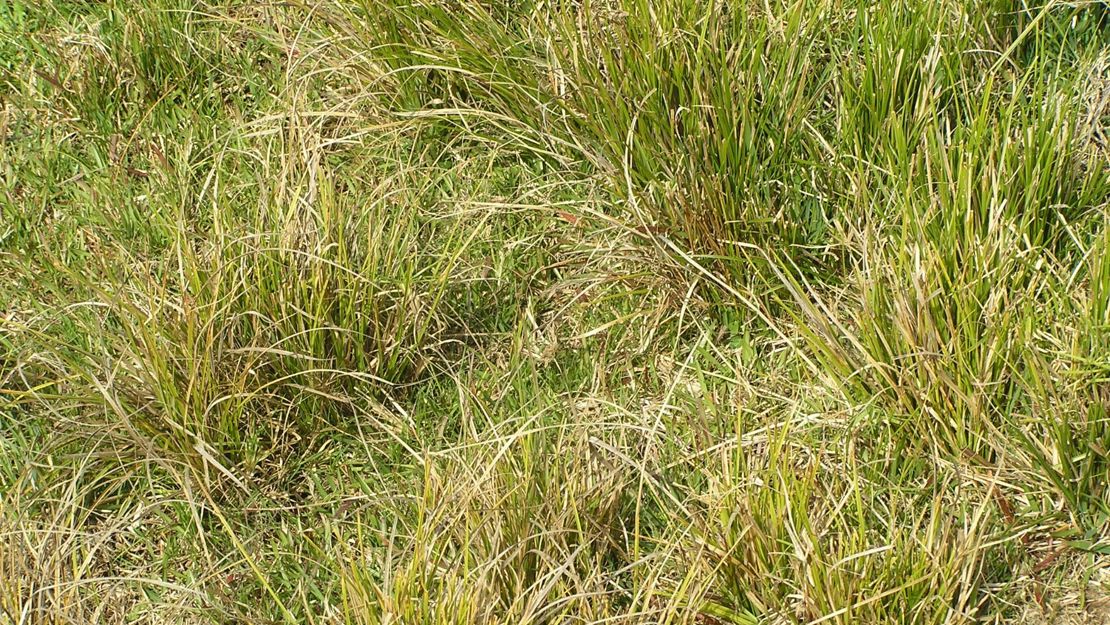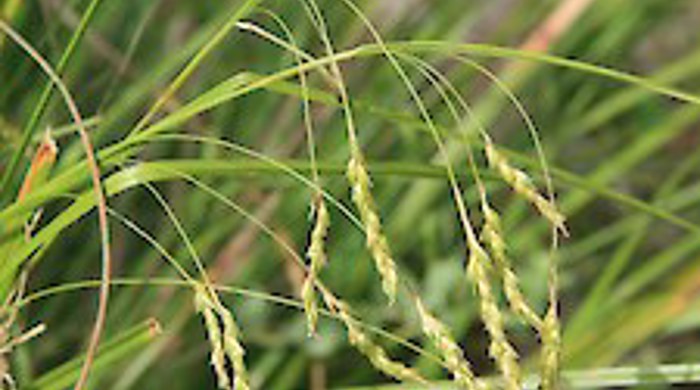Carex longebrachiata
Australian sedge
Family: Cyperaceae
Origin: Australia

Regional Pest Management Plan (RPMP) status
- Whole region — Sustained control
- Hauraki Gulf Controlled Area Notice pest
General description
Perennial, dense, deep-rooted, tussock-forming sedge < 90 cm tall. Leaves are long, drooping and sharp-edged. Flowers are small and borne on drooping inflorescences < 90 cm long.
Seeds are heavy, green/pale brown and ripen in late summer. Multiple flower/seed filaments originate from the same point on the stalk.
What you need to know
To help protect our environment:
- You must not breed, distribute, release or sell Australian sedge within the Auckland region.
- You must not plant Australian sedge within the Auckland region, unless you are transferring an existing plant on your land to another location within the boundaries of the same property.
- You must destroy any Australian sedge on land that you occupy if it has been planted in breach of the above rules and you are directed to do so by an authorised person.
Habitats
Pasture, forest margins, gardens.
Dispersal
Seeds dispersed by gravity and animals. Vegetative spread from tillers and root fragments. Human-mediated dispersal through contamination of soil and machinery.
Impact on environment
Forms dense swards in poor or overgrazed pasture. Unpalatable to livestock and reduces pasture productivity. May suppress growth of native grasses or other short stature plants in grassland or scrub ecosystems.
Control
Site Management
Follow up treated areas 3 times per year. Encourage natural regeneration of native plants or replant treated areas where possible after 2-3 treatments to establish dense ground cover and minimise reinvasion.
Recommended approaches
Physical control
Method: Dig out.
Plant parts requiring disposal: Seeds, tillers and root fragments.
Disposal options: Remove to greenwaste or landfill.
Biocontrol
Biocontrol is currently not available for this species.
Community agrichemical control recommendations
No qualifications:
For small infestations: Foliar spray with 15ml glyphosate green per 1L of water.
Basic Growsafe certified:
For medium to large infestations: Foliar spray with 150ml glyphosate green per 10L of water.
Caution: When using any herbicide or pesticide please read the label thoroughly to ensure that all instructions and safety requirements are followed.




